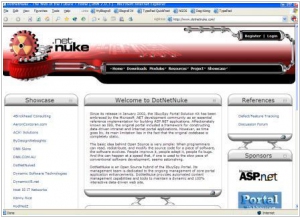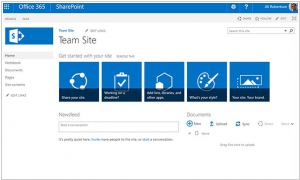DotNetNuke vs SharePoint
March 07, 2025 | Author: Adam Levine
3★
DotNetNuke is a Web Content Management Platform (or CMS) for Microsoft ASP.NET, powering over 700,000 production web sites worldwide. The flexible DotNetNuke open source CMS platform also functions as a web application development framework. Depending on your role within your organization, DotNetNuke provides powerful benefits to support your Web initiatives.
58★
SharePoint's multi-purpose platform allows for managing and provisioning of intranet portals, extranets and websites, document management and file management, collaboration spaces, social networking tools, enterprise search, business intelligence tooling, process/information integration, and third-party developed solutions. SharePoint can also be used as a web application development platform.
DotNetNuke and SharePoint are, at first glance, entirely different creatures, much like a toaster and a Swiss Army knife. However, they share a peculiar fondness for managing digital content, controlling who gets to see what and generally making life more complicated in the name of efficiency. Both run on Microsoft's beloved .NET framework, both let developers add fancy little plugins to extend their usefulness and both are, quite predictably, best understood by people who already have far too many browser tabs open.
DotNetNuke or DNN if you're short on breath, first graced the digital world in 2002 from the depths of the USA, proudly declaring itself a flexible, website-building, portal-creating marvel. It thrives in the hands of those who dream of customizing everything, from colors to workflows, in an endless pursuit of web perfection. It doesn’t much care where you host it, as long as it’s Windows-based and it revels in its role as the rebellious younger sibling of enterprise software—less corporate, more creative.
SharePoint, on the other hand, appeared a year earlier, courtesy of Microsoft and promptly set out to become the ultimate enterprise collaboration tool, whether people liked it or not. It integrates with Office 365, OneDrive and Teams with the enthusiasm of an overexcited office manager, ensuring that no document is ever truly lost—just buried under layers of permissions and version histories. It can exist in the cloud or on-premises, like a digital Schrödinger’s cat and is perfect for businesses that enjoy spending their afternoons configuring security settings rather than doing actual work.
See also: Top 10 Intranet Portals
DotNetNuke or DNN if you're short on breath, first graced the digital world in 2002 from the depths of the USA, proudly declaring itself a flexible, website-building, portal-creating marvel. It thrives in the hands of those who dream of customizing everything, from colors to workflows, in an endless pursuit of web perfection. It doesn’t much care where you host it, as long as it’s Windows-based and it revels in its role as the rebellious younger sibling of enterprise software—less corporate, more creative.
SharePoint, on the other hand, appeared a year earlier, courtesy of Microsoft and promptly set out to become the ultimate enterprise collaboration tool, whether people liked it or not. It integrates with Office 365, OneDrive and Teams with the enthusiasm of an overexcited office manager, ensuring that no document is ever truly lost—just buried under layers of permissions and version histories. It can exist in the cloud or on-premises, like a digital Schrödinger’s cat and is perfect for businesses that enjoy spending their afternoons configuring security settings rather than doing actual work.
See also: Top 10 Intranet Portals




